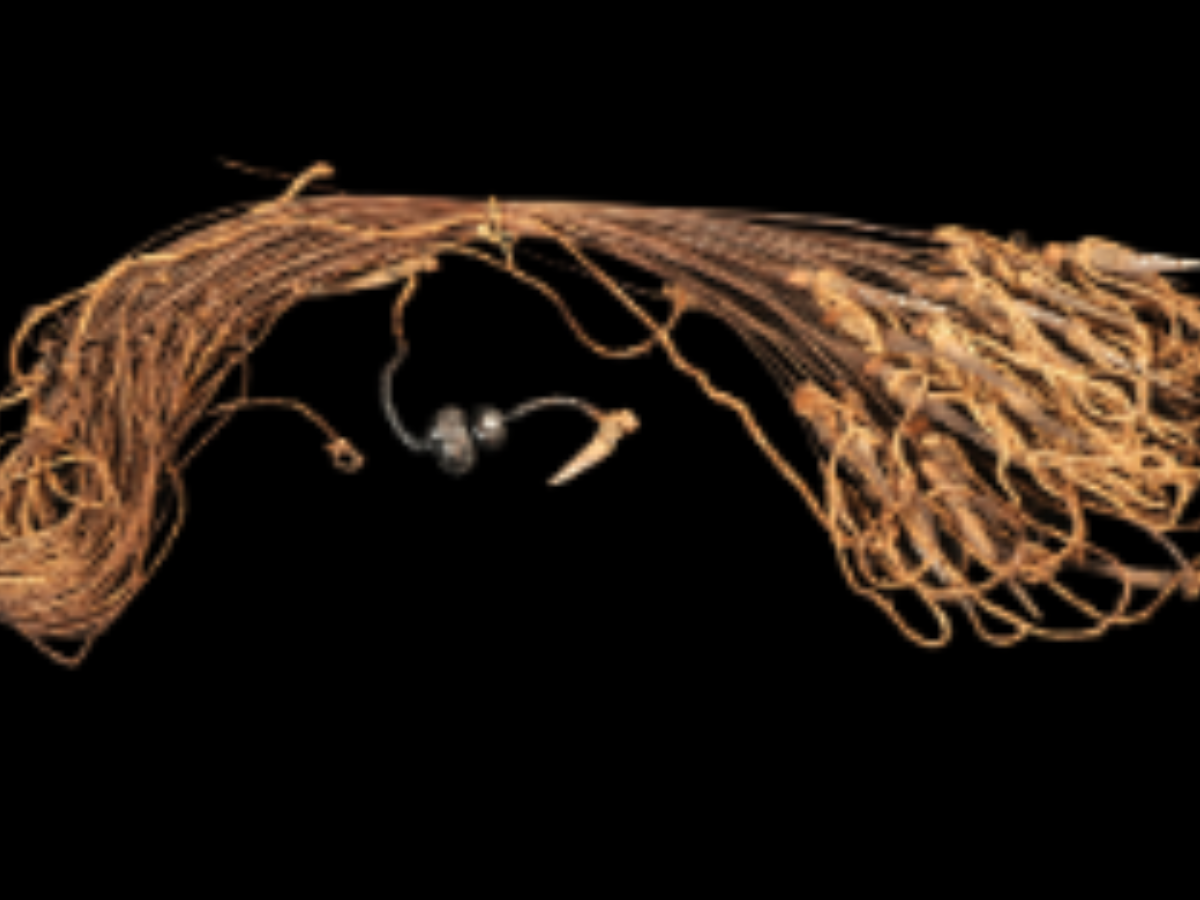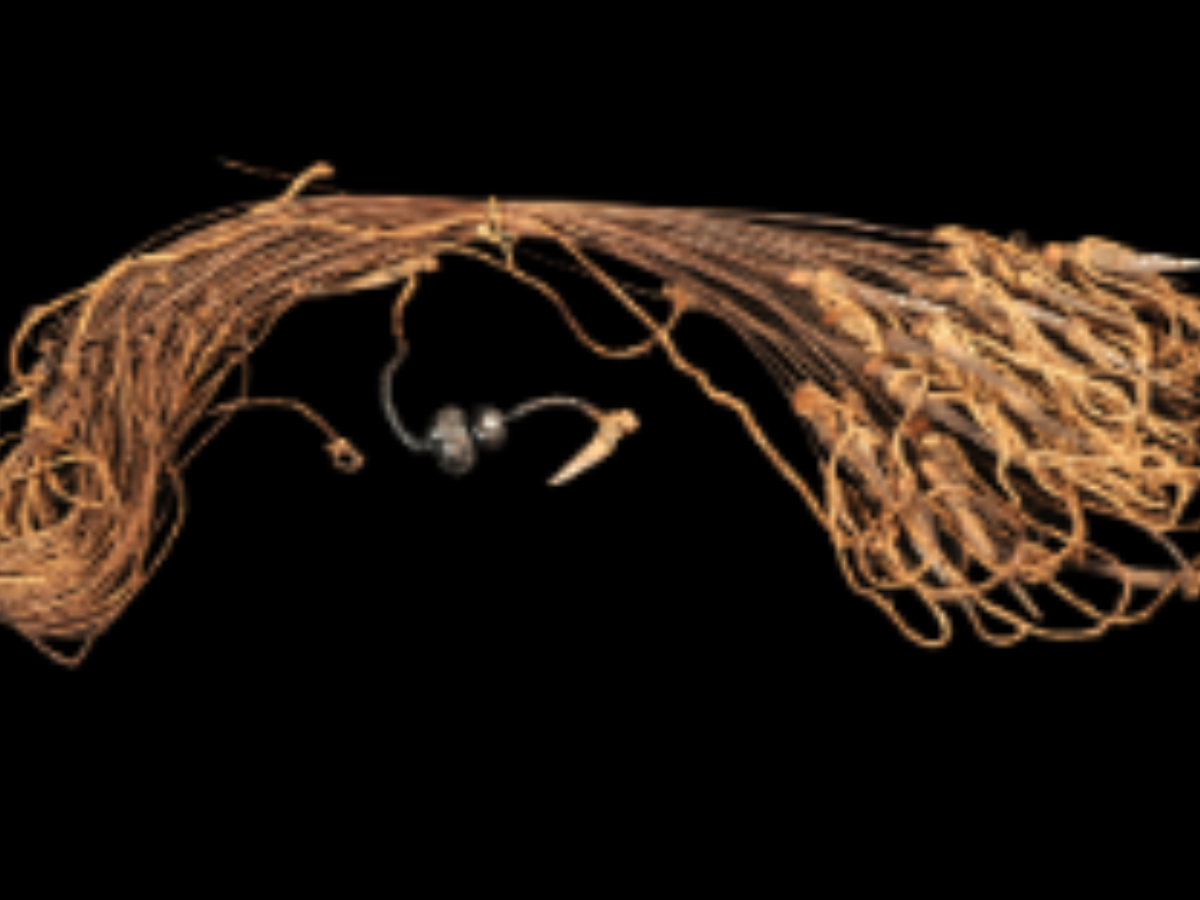State
Tribe Name
Art Type
short description
The Bird Trap with Thin Palm Leaf Fibres is one of the fascinating traditional hunting devices of the Santhal tribe of Jharkhand. The Santhals are one of India's largest and culturally richest tribal communities that have always depended on nature for sustenance and survival. Besides, hunting small birds like doves or pigeons and other ground-feeding species is a common activity in the rural Santhal minds, and such an ingenious trap speaks of the close observations of nature and a deep understanding of natural materials. Thin palm leaf fibres, which constitute the main structure, are carefully fashioned into the trap. These fibres are flexible and strong at the same time, comprising compound factors that are useful for constructing tension-based traps. Small bamboo strips are tied at the ends of each palm fibre and tightened with cotton threads to create better grip and functioning. Those bamboo parts work as trigger mechanisms to support the working of the trap in an open position.
Thumbnail

Filter Postion
Left
Filter Background
Off
Theme
Filter Header Image

content
Image

description
The Bird Trap with Thin Palm Leaf Fibres is one of the fascinating traditional hunting devices of the Santhal tribe of Jharkhand. The Santhals are one of India's largest and culturally richest tribal communities that have always depended on nature for sustenance and survival. Besides, hunting small birds like doves or pigeons and other ground-feeding species is a common activity in the rural Santhal minds, and such an ingenious trap speaks of the close observations of nature and a deep understanding of natural materials. Thin palm leaf fibres, which constitute the main structure, are carefully fashioned into the trap. These fibres are flexible and strong at the same time, comprising compound factors that are useful for constructing tension-based traps. Small bamboo strips are tied at the ends of each palm fibre and tightened with cotton threads to create better grip and functioning. Those bamboo parts work as trigger mechanisms to support the working of the trap in an open position.
The other end of the cotton threads is conveniently tied, increasing the effectiveness of the trap by allowing remote activation. The unique part of the bird trap is that it employs a design with a cowrie shell tied to it and in all probability with a small piece of wood. The cowrie shell might serve as a sight or sound attractor for the birds, while the wooden piece serves as a weight or a trigger. The bird trap thus represents not just an instrument for hunting but a symbol of the sustainable life of the Santhal tribe, being an achievement in their own right to live in harmony with their environment.
The other end of the cotton threads is conveniently tied, increasing the effectiveness of the trap by allowing remote activation. The unique part of the bird trap is that it employs a design with a cowrie shell tied to it and in all probability with a small piece of wood. The cowrie shell might serve as a sight or sound attractor for the birds, while the wooden piece serves as a weight or a trigger. The bird trap thus represents not just an instrument for hunting but a symbol of the sustainable life of the Santhal tribe, being an achievement in their own right to live in harmony with their environment.
Image Mode
landscape
promoted
On
Verified
Off
